Grow Taro at Home: Ever dreamt of harvesting your own creamy, nutty-flavored taro root right from your backyard? I know I have! For centuries, taro has been a staple in many cultures, particularly in Polynesian and Asian cuisines, holding not just nutritional value but also deep cultural significance. From the Hawaiian poi to the savory curries of Southeast Asia, taro’s versatility is truly remarkable.
But let’s be honest, the idea of cultivating this tropical delight might seem a bit intimidating, right? That’s where this DIY guide comes in! Many people think you need a vast, tropical farm to grow taro at home, but I’m here to tell you that’s simply not true. Whether you have a sprawling garden or just a sunny balcony, I’m going to share some simple, effective tricks and hacks that will empower you to successfully cultivate your own taro, no matter your space or experience level. Imagine the satisfaction of harvesting your own fresh taro, knowing exactly where it came from and how it was grown. Let’s ditch the grocery store taro and embark on this exciting gardening adventure together!
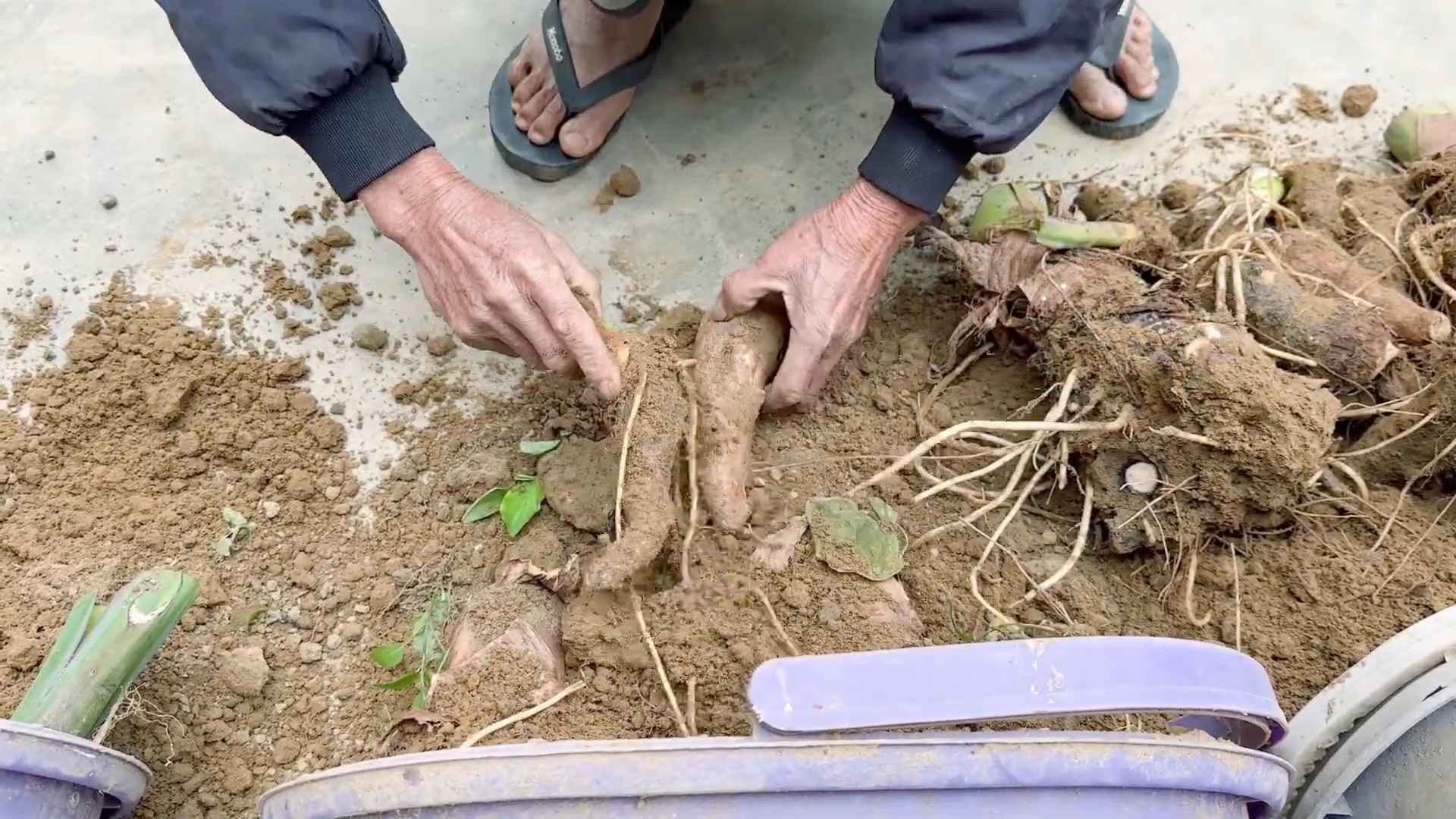
Growing Taro at Home: A Beginner’s Guide
Hey there, fellow plant enthusiasts! Ever thought about growing your own taro? It might seem a little exotic, but trust me, it’s totally doable, even if you don’t have a sprawling tropical garden. I’m going to walk you through everything you need to know to cultivate this amazing plant right in your own home or backyard. Let’s get started!
Choosing Your Taro Variety
First things first, let’s talk taro varieties. There are tons out there, each with its own unique characteristics. Some are better suited for container growing, while others thrive in the ground. Here are a few popular options:
* Bun Long: This is a common variety, known for its large, heart-shaped leaves and delicious corms. It’s a great all-around choice.
* Dasheen: Another widely cultivated variety, Dasheen produces large corms and is often used in stews and soups.
* Eddoe: Eddoe taro produces smaller corms, but they mature much faster than other varieties. If you’re looking for a quicker harvest, this might be the one for you.
* Black Magic: If you’re after something visually striking, Black Magic taro is a winner. Its dark purple to black leaves add a dramatic touch to any garden.
Getting Started: Propagation Methods
You have a couple of options when it comes to starting your taro plants: from corms (the underground tubers) or from cuttings. I personally prefer starting with corms, as I find it’s a bit more straightforward.
Starting from Corms
1. Source Your Corms: You can usually find taro corms at Asian grocery stores or online nurseries. Look for firm, healthy corms without any signs of rot or damage.
2. Prepare the Corms: Before planting, you can encourage sprouting by placing the corms in a warm, humid environment. I like to wrap them in damp paper towels and put them in a plastic bag for a few days.
3. Planting the Corms: Choose a pot that’s at least 12 inches in diameter and fill it with a well-draining potting mix. Plant the corm about 2-3 inches deep, with the pointed end facing up.
4. Watering: Water thoroughly after planting, and keep the soil consistently moist but not waterlogged. Taro loves moisture!
5. Location: Place the pot in a warm, sunny location. Taro needs plenty of sunlight to thrive.
Starting from Cuttings
1. Obtain Cuttings: You can get taro cuttings from a mature plant. Look for healthy stems with a few leaves.
2. Prepare the Cuttings: Cut the stem into sections, each with at least one node (the point where a leaf grows). Remove the lower leaves to prevent them from rotting in the water.
3. Rooting the Cuttings: Place the cuttings in a jar of water, making sure the nodes are submerged. Change the water every few days to keep it fresh.
4. Planting the Rooted Cuttings: Once the cuttings have developed roots (usually in a couple of weeks), you can plant them in pots filled with well-draining potting mix.
5. Watering and Location: Water thoroughly after planting, and keep the soil consistently moist. Place the pots in a warm, sunny location.
Caring for Your Taro Plants
Once your taro plants are established, it’s time to focus on providing them with the care they need to flourish.
1. Watering: Taro loves water, so keep the soil consistently moist. I usually water my taro plants every day or two, especially during hot weather. You can even grow taro in a container with no drainage holes, keeping the soil constantly saturated.
2. Fertilizing: Taro is a heavy feeder, so regular fertilization is essential. I like to use a balanced liquid fertilizer every two to three weeks during the growing season. You can also amend the soil with compost or other organic matter.
3. Sunlight: Taro needs plenty of sunlight to thrive. Aim for at least six hours of direct sunlight per day. If you’re growing taro indoors, place it near a sunny window or use a grow light.
4. Temperature: Taro prefers warm temperatures, ideally between 70°F and 85°F (21°C and 29°C). It can tolerate slightly cooler temperatures, but growth will slow down.
5. Humidity: Taro loves humidity, so if you live in a dry climate, you may need to increase the humidity around your plants. You can do this by misting the leaves regularly, placing the pots on a tray filled with water and pebbles, or using a humidifier.
6. Pest Control: Taro is generally pest-resistant, but it can sometimes be affected by aphids, spider mites, or mealybugs. If you notice any pests, treat them with insecticidal soap or neem oil.
7. Pruning: You can prune your taro plants to remove any dead or damaged leaves. This will help to keep the plants healthy and attractive.
Harvesting Your Taro
The time it takes to harvest your taro will depend on the variety you’re growing and the growing conditions. Generally, you can expect to harvest your taro corms in about 6-12 months.
1. Signs of Maturity: The leaves of the taro plant will start to turn yellow and die back when the corms are mature. This is a sign that it’s time to harvest.
2. Harvesting the Corms: To harvest the corms, carefully dig around the base of the plant and lift it out of the soil. The corms will be attached to the roots.
3. Cleaning the Corms: Wash the corms thoroughly to remove any dirt or debris.
4. Storing the Corms: You can store the corms in a cool, dry place for several weeks.
Troubleshooting
Even with the best care, you might encounter a few challenges along the way. Here are some common problems and how to address them:
* Yellowing Leaves: This could be a sign of overwatering, underwatering, nutrient deficiency, or pest infestation. Check the soil moisture, fertilize regularly, and inspect the plants for pests.
* Stunted Growth: This could be due to insufficient sunlight, low temperatures, or nutrient deficiency. Make sure your taro plants are getting enough sunlight, keep them warm, and fertilize regularly.
* Root Rot: This is usually caused by overwatering. Make sure the soil is well-draining and avoid letting the plants sit in standing water.
* Pest Infestation: Treat any pests with insecticidal soap or neem oil.
Growing Taro in Containers vs. In-Ground
You can successfully grow taro in both containers and in the ground. Here’s a quick comparison:
Container Growing
* Pros: Easier to control growing conditions, can be moved indoors during cold weather, good for small spaces.
* Cons: Requires more frequent watering and fertilizing, corms may be smaller.
In-Ground Growing
* Pros: More natural growing environment, larger corms, less frequent watering.
* Cons: Requires more space, less control over growing conditions, may not be suitable for cold climates.
Taro’s Nutritional Benefits
Beyond being a fun plant to grow, taro is also incredibly nutritious! The corms are a great source of:
* Fiber: Aids digestion and promotes gut health.
* Vitamins: Rich in Vitamin C, Vitamin B6, and Vitamin E.
* Minerals: Contains potassium, manganese, and copper.
* Antioxidants: Helps protect your body against damage from free radicals.
Cooking with Taro
Now for the best part – enjoying the fruits (or rather, corms) of your labor! Taro can be used in a variety of dishes. Remember to always cook taro before eating it, as raw taro contains calcium oxalate crystals that can cause irritation.
Here are a few ideas:
* Taro Chips: Slice the corms thinly, bake or fry them until crispy, and season with salt and spices.
* Taro Fries: Cut the corms into fries, bake or fry them, and serve with your favorite dipping sauce.
* Taro Stew: Add diced taro to stews and soups for a hearty and nutritious meal.
* Poi: A traditional Hawaiian dish made from mashed taro corms.
* Taro Bubble Tea: Use taro powder or cooked taro to flavor your bubble tea.
Final Thoughts
Growing taro at home can be a rewarding experience. With a little bit of care and attention, you can enjoy the beauty of these tropical plants and the deliciousness of their c
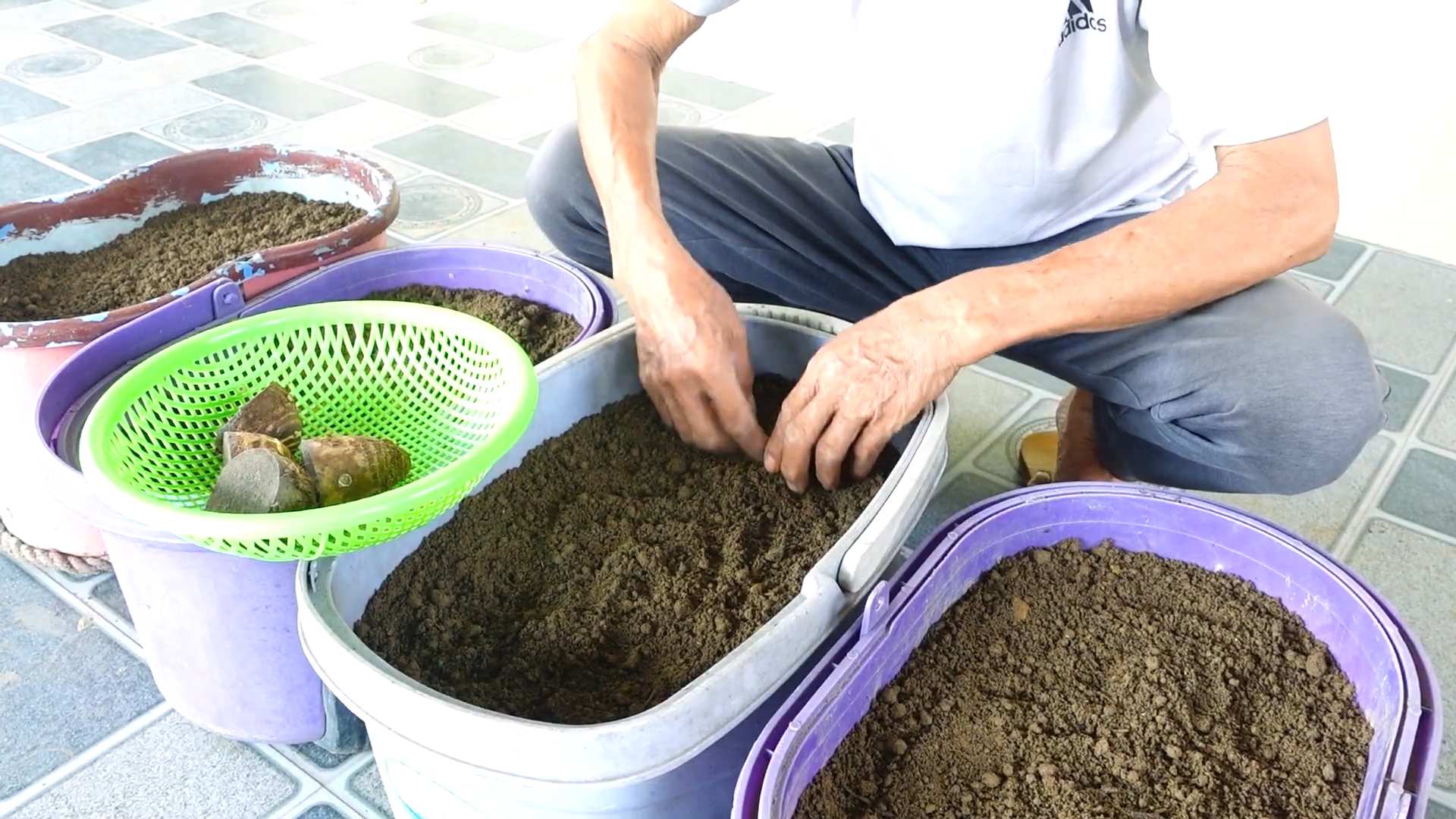
Conclusion
So, there you have it! Growing taro at home is not only achievable but also incredibly rewarding. From understanding the plant’s needs to providing the right environment, this guide has equipped you with the knowledge to cultivate your own thriving taro patch. Why is this DIY trick a must-try? Because it connects you to your food source, offers a sustainable way to enjoy this delicious and nutritious root vegetable, and provides a unique gardening experience that’s both educational and fulfilling.
Imagine the satisfaction of harvesting your own taro, knowing exactly where it came from and how it was grown. Think of the delicious meals you can create, from traditional poi to savory taro chips. And consider the beauty of adding this lush, tropical plant to your home garden. The benefits are numerous and far outweigh the effort involved.
But the journey doesn’t end here! Feel free to experiment with different varieties of taro to discover your favorite flavors and textures. Try growing taro in containers if you have limited space, or explore hydroponic methods for a more controlled environment. You can even use the taro leaves in your cooking, adding a unique flavor and nutritional boost to your dishes. Just remember to cook them thoroughly to remove any potential irritants.
Don’t be afraid to get your hands dirty and embrace the learning process. Gardening is all about trial and error, and every mistake is an opportunity to grow (pun intended!). The key is to be patient, observant, and adaptable. Pay attention to your taro plants, listen to their needs, and adjust your approach as necessary.
We are confident that with a little effort and dedication, you can successfully grow taro at home and enjoy the many benefits it has to offer. So, what are you waiting for? Grab your gardening gloves, gather your supplies, and embark on this exciting adventure.
We encourage you to try this DIY trick and share your experience with us. Post photos of your taro plants, share your tips and tricks, and let us know what challenges you faced and how you overcame them. Together, we can create a community of taro enthusiasts and inspire others to grow their own food. Let’s celebrate the joy of gardening and the deliciousness of homegrown taro! Remember, the journey of a thousand miles begins with a single seed, and the journey to delicious, homegrown taro begins with you. So, get planting and enjoy the fruits (or rather, the roots) of your labor!
Frequently Asked Questions (FAQs)
What is taro and why should I grow it?
Taro (Colocasia esculenta) is a starchy root vegetable that is a staple food in many cultures around the world, particularly in the Pacific Islands, Asia, and Africa. It’s a good source of carbohydrates, fiber, vitamins, and minerals. Growing taro at home allows you to have a fresh, sustainable source of this nutritious food. Plus, it’s a beautiful plant that can add a tropical touch to your garden. Beyond its nutritional value, growing your own taro connects you to the process of food production, offering a rewarding and educational experience. You control the growing conditions, ensuring that your taro is free from harmful pesticides and chemicals.
What are the ideal growing conditions for taro?
Taro thrives in warm, humid environments with plenty of sunlight. It prefers moist, well-drained soil that is rich in organic matter. Ideally, the soil pH should be between 5.5 and 6.5. Taro can tolerate partial shade, but it will produce the best yields in full sun (at least 6 hours of direct sunlight per day). Consistent moisture is crucial, so regular watering is essential, especially during dry periods. Consider using mulch to help retain moisture and suppress weeds. If you live in a cooler climate, you can grow taro in containers and bring them indoors during the winter months.
How do I start growing taro?
You can start growing taro from corms (the main root), cormels (smaller roots that grow off the main corm), or even stem cuttings. Corms and cormels are the most common starting materials. Plant them in the soil about 2-3 inches deep, with the pointed end facing upwards. If using stem cuttings, make sure they have at least one node (the point where a leaf grows) and plant them in moist soil. Keep the soil consistently moist but not waterlogged. It typically takes several weeks for the taro to sprout.
How often should I water my taro plants?
Taro plants need consistent moisture, so water them regularly, especially during dry periods. The soil should always be moist to the touch, but not waterlogged. Overwatering can lead to root rot, so make sure the soil is well-draining. A good rule of thumb is to water deeply whenever the top inch of soil feels dry. You can also use a moisture meter to check the soil moisture level.
What kind of fertilizer should I use for taro?
Taro plants benefit from regular fertilization. Use a balanced fertilizer (e.g., 10-10-10) every few weeks during the growing season. You can also amend the soil with compost or other organic matter to provide essential nutrients. Avoid over-fertilizing, as this can lead to excessive leaf growth at the expense of corm development.
How long does it take for taro to mature?
Taro typically takes 7-12 months to mature, depending on the variety and growing conditions. You’ll know it’s ready to harvest when the leaves start to turn yellow and die back. The corm should be firm and well-developed.
How do I harvest taro?
To harvest taro, carefully dig around the plant and lift the corm out of the soil. Use a shovel or garden fork to loosen the soil around the plant. Be careful not to damage the corm. Once you’ve lifted the corm, you can separate the cormels (smaller roots) and use them for replanting.
Are there any pests or diseases that affect taro?
Taro can be susceptible to pests such as aphids, spider mites, and taro leafhoppers. These pests can be controlled with insecticidal soap or neem oil. Diseases such as root rot and leaf blight can also affect taro. To prevent these diseases, ensure good drainage and avoid overwatering. If you notice any signs of disease, remove the affected leaves or plants immediately.
Can I eat the taro leaves?
Yes, you can eat the taro leaves, but they must be cooked thoroughly to remove calcium oxalate crystals, which can cause irritation. Boiling or steaming the leaves for at least 30 minutes will break down these crystals. Taro leaves are often used in dishes such as laulau (a traditional Hawaiian dish).
What are some ways to use taro in cooking?
Taro can be used in a variety of dishes. The corm can be boiled, steamed, baked, or fried. It can be mashed into poi (a traditional Hawaiian dish), used in soups and stews, or made into taro chips. The leaves can be used in dishes such as laulau. Taro has a slightly sweet, nutty flavor that pairs well with both savory and sweet ingredients.
Can I grow taro in containers?
Yes, you can grow taro in containers, which is a great option if you have limited space or live in a cooler climate. Choose a large container with drainage holes and fill it with well-draining soil. Keep the soil consistently moist and fertilize regularly. You may need to bring the container indoors during the winter months if you live in a cold climate.
Is growing taro at home difficult?
Growing taro at home is relatively easy, but it does require some attention and care. The key is to provide the right growing conditions, including warm temperatures, consistent moisture, and plenty of sunlight. With a little effort and dedication, you can successfully grow taro at home and enjoy the many benefits it has to offer.

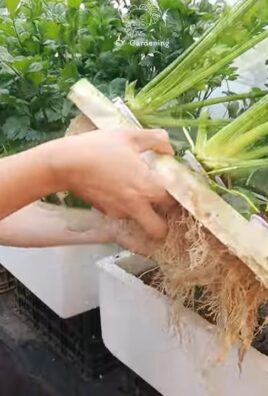
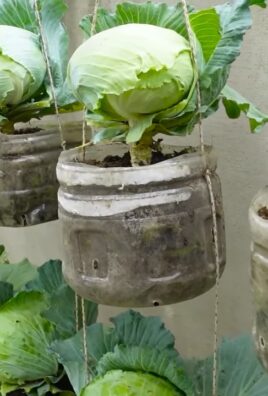
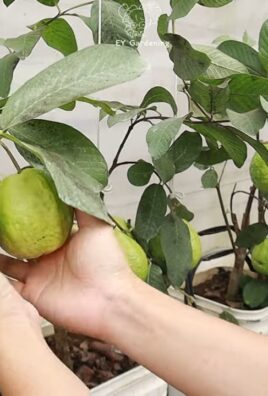
Leave a Comment